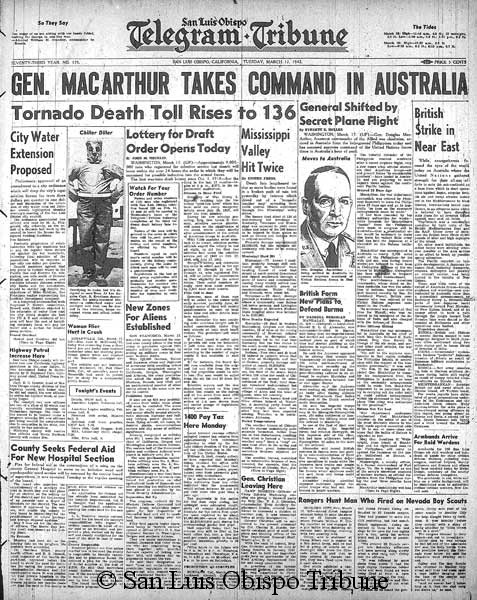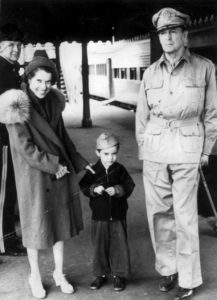 by Duke Doering
by Duke Doering
When Gen. Douglas MacArthur made his escape from the Philippines in early 1942, and made the famous statement “I shall return”, he made his way to Australia where he commanded the allies in the Pacific for the remainder of World War II.
MacArthur was probably one of the most recognizable names in the United States Army during World War II and the Korean War. When General MacArthur arrived in Australia he landed at Batchelor Field which was controlled by a South Dakota National Guard unit, Battery B, 147th Field Artillery, from Mitchell, SD. MacArthur was one of many famous wartime figures from that era that had personal contact with the troops of the South Dakota National Guard.
On December 8, 1941, the day after the Japanese bombed Pearl Harbor, they also attacked the Philippines. Almost half of the American aircraft in the Philippines were destroyed. General MacArthur was the Army Commander in the Philippines at that time. The Philippines had been part of the American commonwealth since Spain ceded it at the close of the Spanish-American War at the turn of the century.
By late December, MacArthur had to pull his forces back to the Bataan Peninsula. A message from President Roosevelt arrived at Corregidor on February 20, 1942 ordering MacArthur to leave immediately for Mindanao, then  on to Melbourne, Australia, where he was to assume command of all United States land forces in the Pacific. MacArthur finally obeyed the president’s order on March 11. He loaded his contingent, which included his wife and son, on four PT boats which weaved their way through the Japanese Navy, finally arriving at Mindanao. General MacArthur and his group, relatively safe at Mindanao, escaped from the Del Monte airfield on two B-17 Flying Fortresses. Just before midnight on March 17, 1942, St Patrick’s Day, the two B-17’s taxied out onto Del Monte airfield, which was lit by two flares. MacArthur sat in the radio operator’s seat. Lt. Frank Bostrom’s overloaded B-17 Flying Fortress staggered into the air from Del Monte airfield with one engine spluttering.
on to Melbourne, Australia, where he was to assume command of all United States land forces in the Pacific. MacArthur finally obeyed the president’s order on March 11. He loaded his contingent, which included his wife and son, on four PT boats which weaved their way through the Japanese Navy, finally arriving at Mindanao. General MacArthur and his group, relatively safe at Mindanao, escaped from the Del Monte airfield on two B-17 Flying Fortresses. Just before midnight on March 17, 1942, St Patrick’s Day, the two B-17’s taxied out onto Del Monte airfield, which was lit by two flares. MacArthur sat in the radio operator’s seat. Lt. Frank Bostrom’s overloaded B-17 Flying Fortress staggered into the air from Del Monte airfield with one engine spluttering.
When they reached Darwin, Australia, they found that it was under Japanese attack, so they diverted to Batchelor airfield, about 50 miles from Darwin. They finally set foot in Australia when they embarked from the aircraft at Batchelor Field about mid-morning. MacArthur’s entourage borrowed the Battery B vehicles to move their equipment and personnel to their temporary quarters. MacArthur said, “It was close, but that’s the way it is in war. You win or lose, live or die — and the difference is just an eyelash”.
MacArthur stayed only a short time at Batchelor Field before he moved to Melbourne on 21 March 1942, and immediately installed himself in the best suite in the Menzies Hotel. In the climate of great anxiety in Canberra for Australia’s survival, the Curtin government was greatly relieved by General MacArthur’s appointment as Supreme Commander of the South West Pacific Area and the location of his headquarters in Australia. The self-styled “Hero of the Pacific” was greeted with adulation by Australian politicians, public and media.
Capt. Richard Cropp was Commander of Battery B, 147th Field Artillery at the time. Cropp later went on to author the South Dakota National Guard history book, THE COYOTES, published in 1962.

